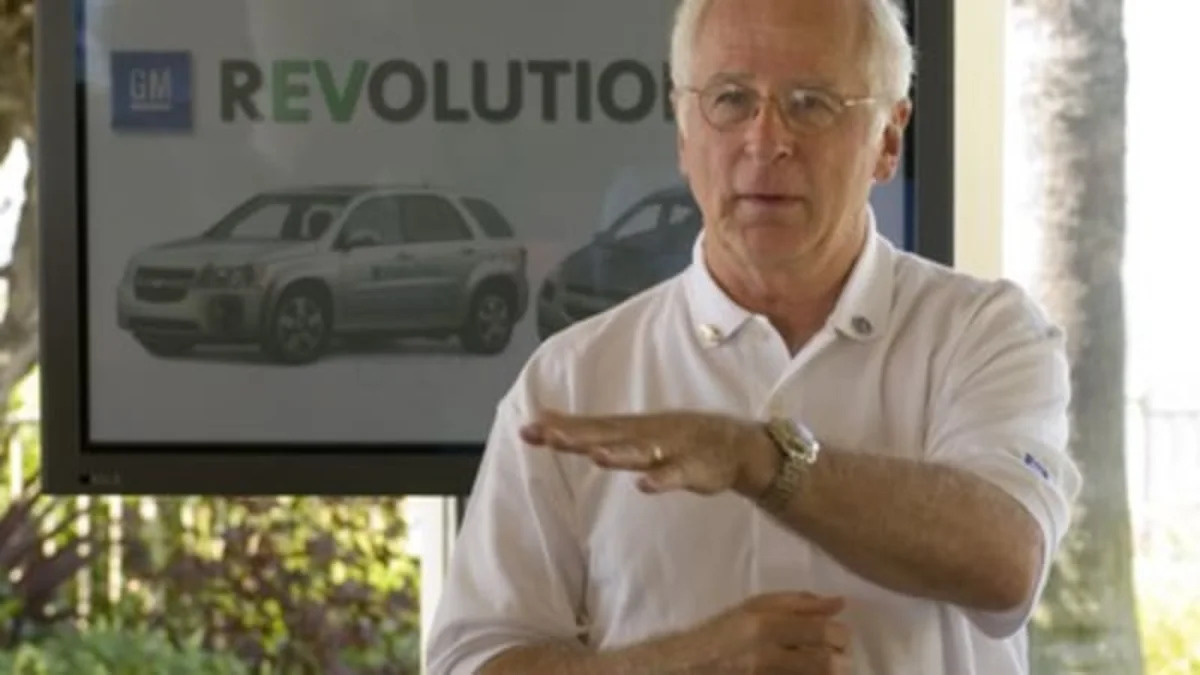Byron McCormick is the executive director of
General Motors' Global Fuel Cell Activities. In the
first part of an
AutoblogGreen interview, he offered thoughts on the advantages of
hydrogen and what technology may be found in a production fuel-cell vehicle. Now he discusses infrastructure, the fuel-cell customer and vehicle maintenance.
AutoblogGreen: There is still discussion about home-based reformers to refuel hydrogen fuel cell vehicles. Is that an option GM supports or would you rather see dedicated refueling stations?
M
cCormick: I think it will be a mixture of both. A good number of people who had the EV1, myself included, like the idea of home recharging. First week it was kind of strange to get out and plug it in every night. But after I lived with it awhile I found it to be a pretty nice feature. It will be something that some people will like and others won't.
AutoblogGreen: And what about having the vehicle power your house while it's in the garage. Is that scenario still possible?
McCormick: Sure. The car is an expensive piece of capital equipment considering it's parked 90 percent of the time. Using the car for that is a logical step.
AutoblogGreen: Let's talk about maintenance. I can find tires, coolant, brake pads and A/C refrigerant.
McCormick: That's about it. One of the things we're still learning, we need to make the fuel cell more durable in the sense that we lose some surface area but we're making great progress on it. As we get past that, you start thinking this should be a very reliable car.
AutoblogGreen: Dealers are already screaming that they can't find reliable technicians for today's cars. How is GM going to address this very technical vehicle in terms of service and maintenance?
McCormick: That's one of the things we're actually doing with this cycle. There are several things you can't see in that vehicle we showed you today. We're worried about all the diagnostic codes in terms of how do you troubleshoot the car, how do you automate the troubleshooting. We're connecting to OnStar and looking at computer programs that will help trigger what needs to be looked at and why you have to look at it. We're actually starting to write the repair manuals even though it's just a 100 vehicles, to let us go through the exercise.
AutoblogGreen: Let's talk about the early customers. Some will buy because it's fashion. But who's going to be the alpha customer who will convince neighbors and coworkers that the fuel cell is a viable vehicle?
McCormick: The early adopters tend to be high-tech people. They have an environmental bent but they're the first to buy a flat-screen TV, banking online and all that. The people we think to come on behind are more mainstream, quite often women who are genuinely worried about the environment but they want to know the technical risk is out of it.
AutoblogGreen: There will be a time when the source of people who buy for altruistic reasons will dry up. People are going to have to buy fuel cell vehicles for financial reasons.
McCormick: That's one of the things we're quite honestly working on. Do we have a foolproof plan? No. That's where Rick Waggoner talks about partnerships. We've got to be working with governments. For example, what about tax incentives? A lot of this is capitalization that can't return until you get high volume. Another idea I've floated to legislators is not taxing hydrogen as a vehicle fuel until maybe 10 percent of the fleet is hydrogen. You won't lose that much revenue but you've given hydrogen a step up.


Sign in to post
Please sign in to leave a comment.
Continue